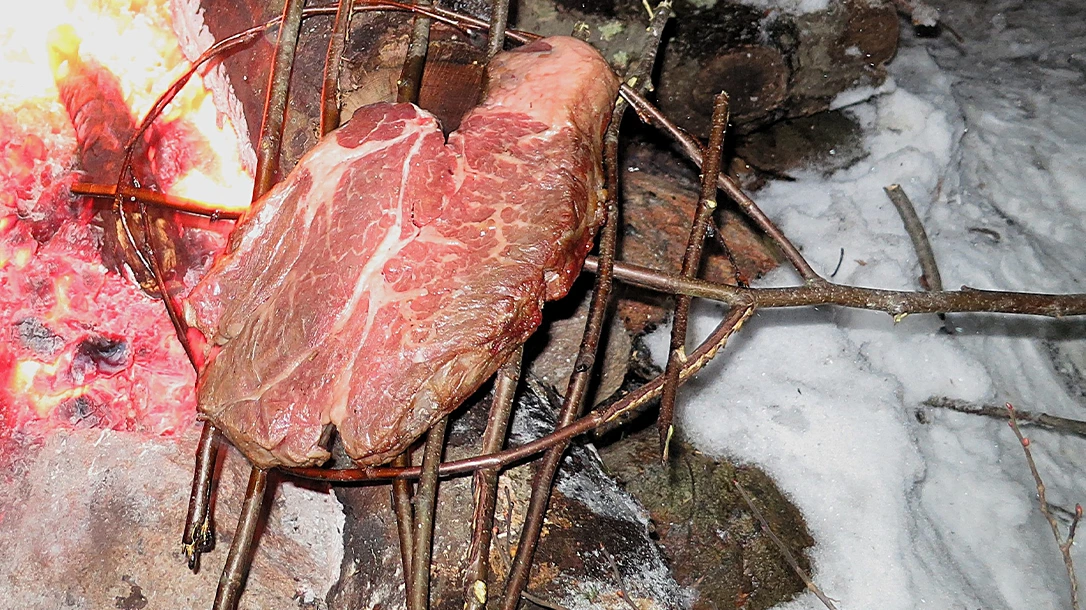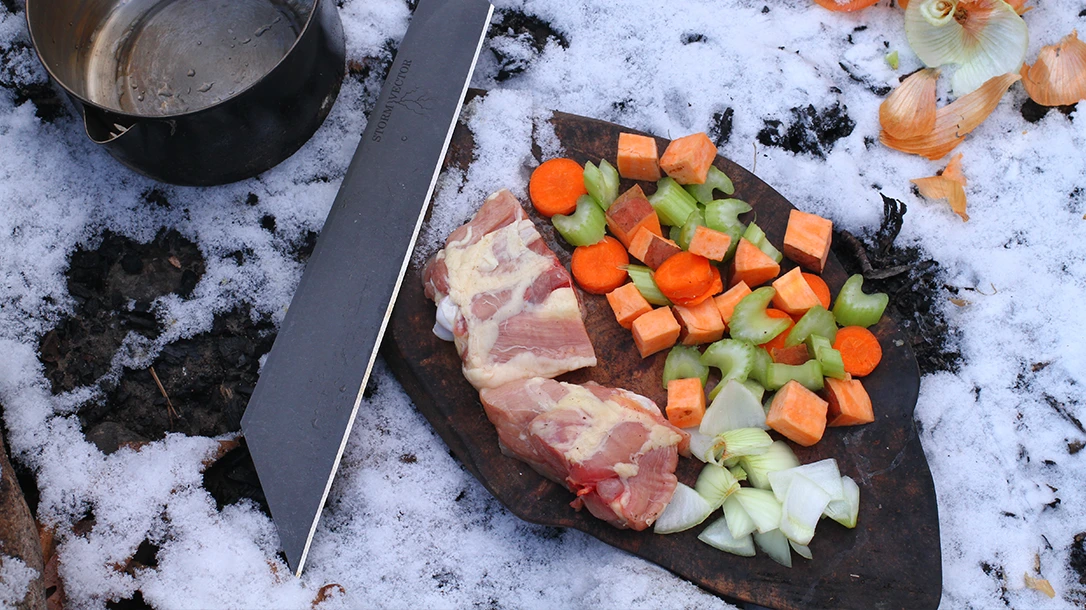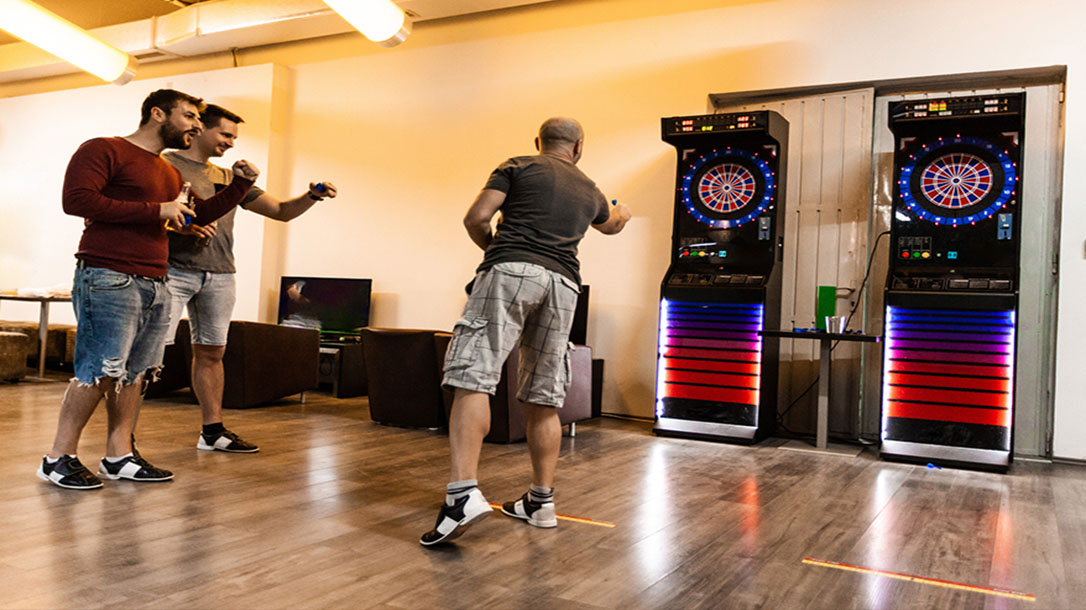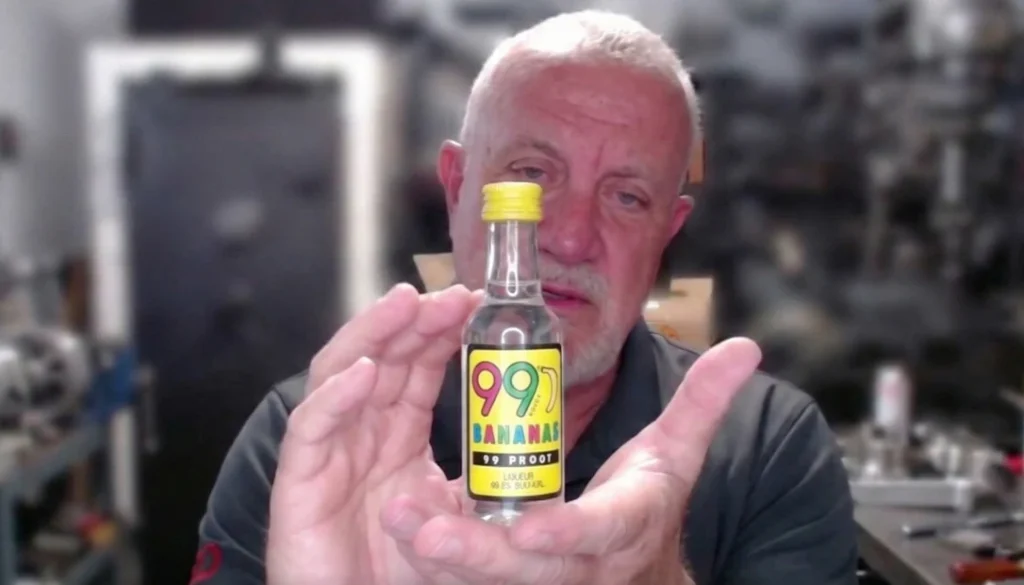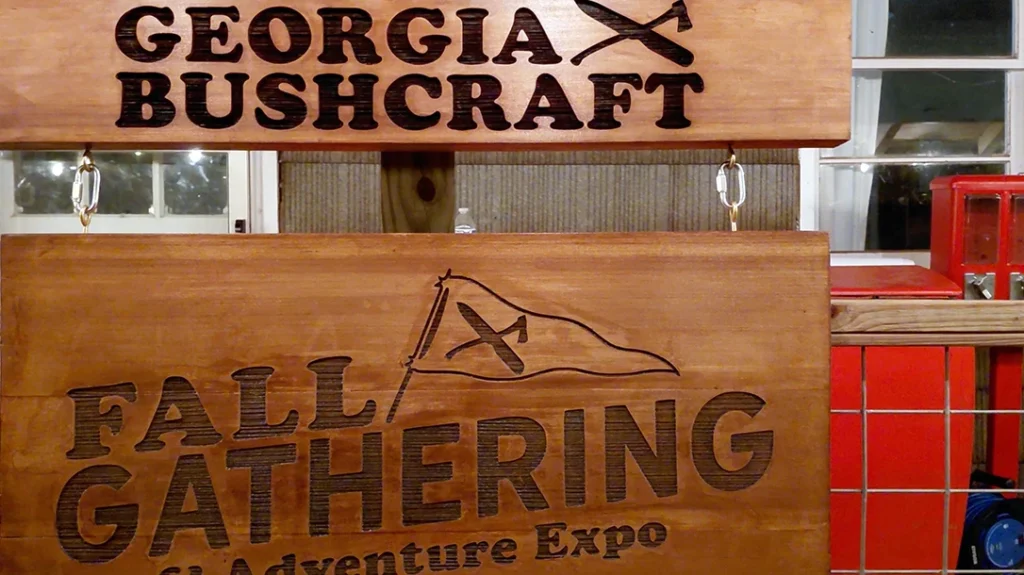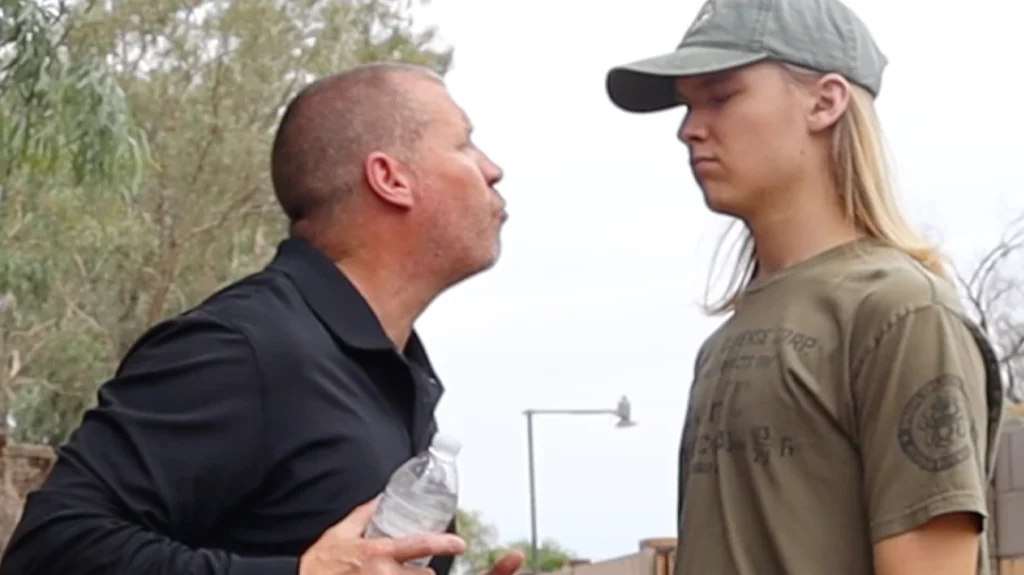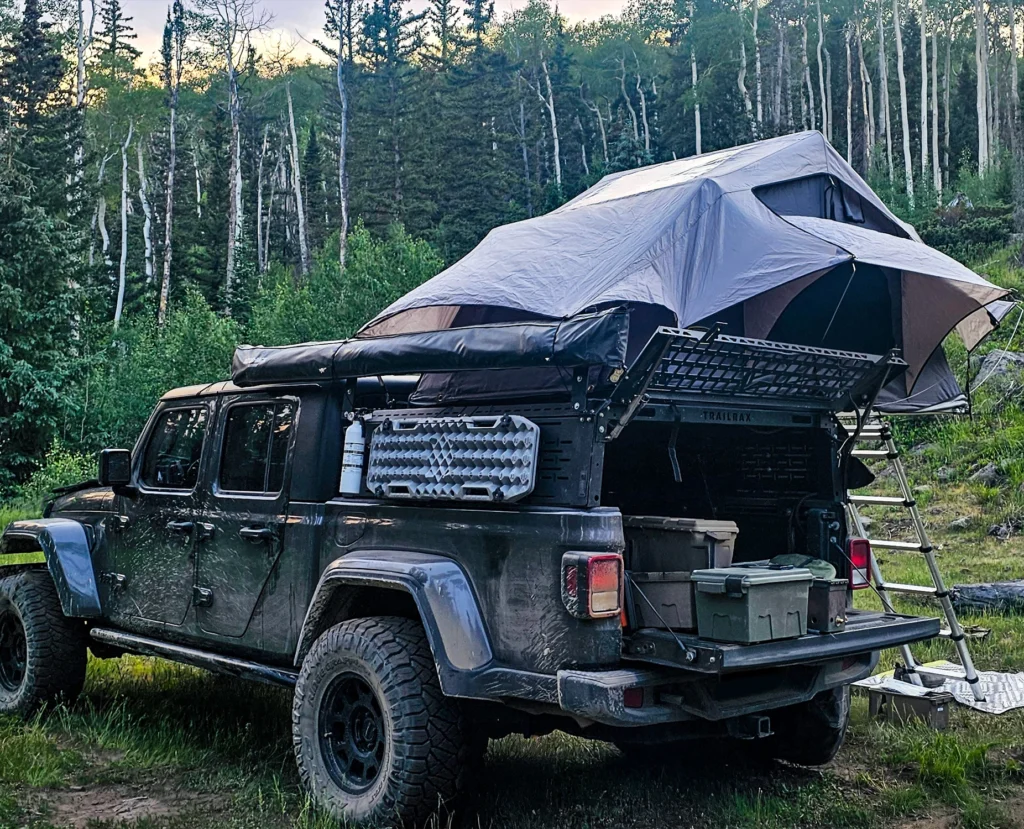When the lights go out or the world tilts sideways, cooking turns into a survival skill—and stealth is your ally. This guide cuts through the noise, showing you how to cook with unconventional gear and offbeat techniques. Practice them now in your backyard or on a campout, so when it matters, you’re ready.
Keep Fires Low and Quiet
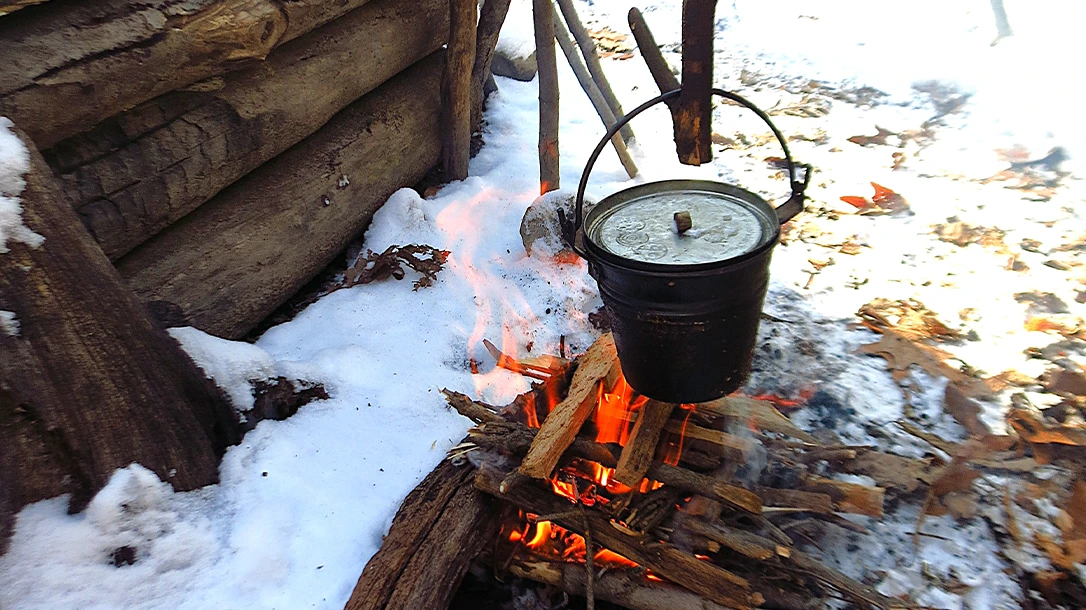
Stealth Cooking Techniques
In a survival setting, fire is both a lifeline and a liability. A roaring blaze might cook your food faster, but it also burns through precious fuel and sends a signal flare to anyone within miles. Keep your flames low, controlled, and efficient—just enough to get the job done without drawing unwanted eyes.
Noise discipline matters just as much as fire discipline. When gathering wood or prepping fuel, reach for tools that cut clean and quietly. A good saw will outpace an axe every time, slicing through logs with less effort and far less racket. In a world where attention can be a double-edged sword, silence is a form of survival.
Think of it this way: conserve heat, conserve fuel, conserve noise. The smaller your footprint, the longer you last.
Advertisement — Continue Reading Below
Cooking in Daylight
Cooking during daylight hours can be a risky business. The flickering flame draws the eyes of both curious onlookers and potential threats. Instead of broadcasting your meal to the world, find ways to keep your fire discreet. Use a portable stove or cook in a sheltered area where the smoke is less visible. If you must use a fire, try to do it when the sun starts to dip, casting shadows that hide your activity. Stay alert, keep your meals efficient, and remember that stealth can be just as satisfying as a hearty meal. Protect your resources; don’t give away your position.
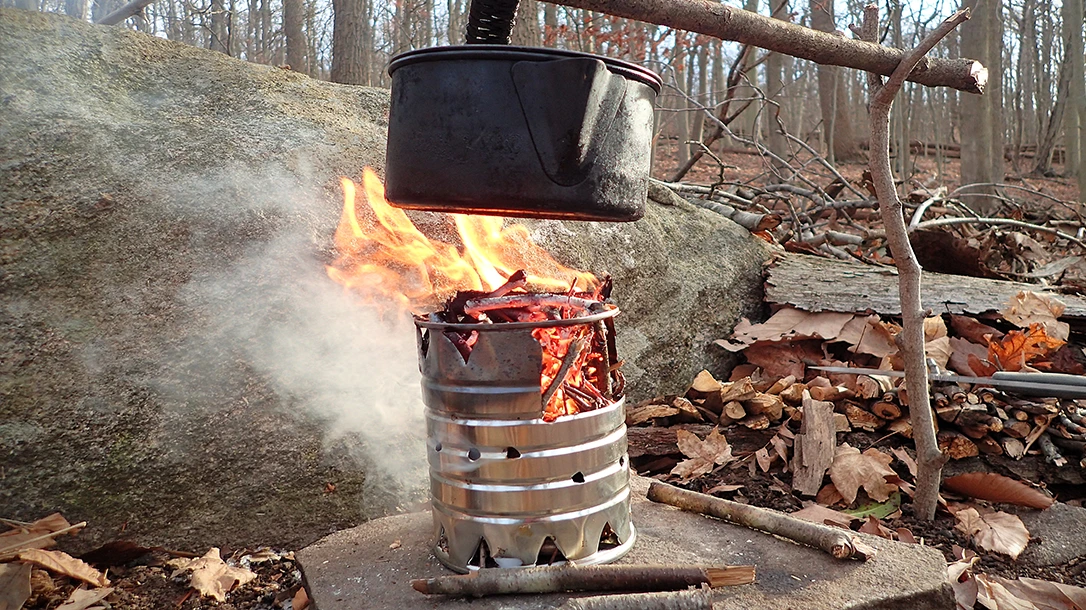
Hobo Stoves
The small flame with a big advantage. In a world where every spark counts, a hobo stove is your best friend. These improvised cookers sip fuel instead of guzzling it. Their low, contained flame keeps you fed without lighting up the night like a signal fire. They’re the definition of “use what you’ve got.” A coffee can, or any other scrap metal container, can become a stealth kitchen with correct cuts and vents.
The beauty is in the simplicity. You don’t need a workshop or a complete tool chest. With a multi-tool, a church key can opener, and a pair of tin snips, you can punch air holes, carve openings, and shape a stove in minutes. The result? A compact, efficient burner that runs on twigs, scraps, or whatever fuel you scavenge.
Stealth cooking is the name of the game. A hobo stove keeps smoke and flame to a minimum, conserving resources while keeping your footprint small. Practice building and cooking on one now—backyard, campsite, or tailgate—so when the grid goes down, you’re not fumbling with theory. You’ll already know how to turn junk metal into hot meals with nothing more than common sense and a steady hand.
Advertisement — Continue Reading Below
Water as a Mask
Sound carries farther than you think, and noise can be as dangerous as smoke. Every strike of an axe, every clang of metal on metal, is a beacon to anyone listening. That’s where water becomes your ally. Position yourself near a waterfall, rushing stream, or even heavy rain, and let nature’s white noise cloak your work. The sound of rushing water drowns out the chopping wood, bone-splitting, and hammering required to construct a hobo stove.
But masking works both ways. Just as the water hides your noise, it can also drown out the approach of others. Predators, human or otherwise, can move closer under the same cover you’re relying on. That means heightened awareness is non‑negotiable. Keep your head on a swivel, set a lookout if you’re with a group, and never assume the water’s song makes you invisible.
Think of it as a double‑edged tool: water buys you stealth, but it also demands vigilance. Use it wisely, and you’ll work in relative safety without broadcasting your presence to the world.
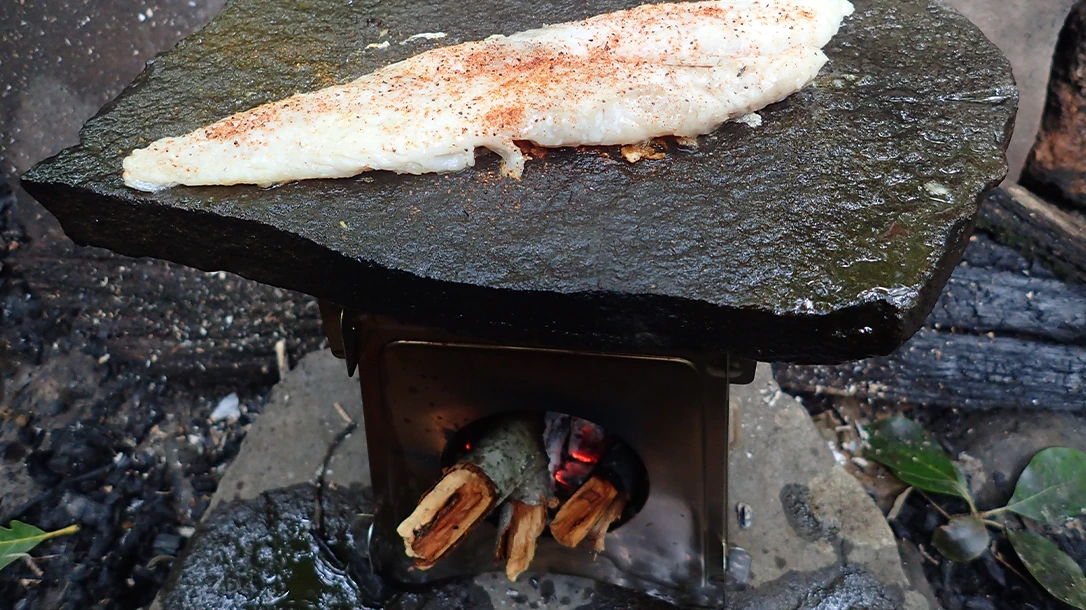
Use Mother Nature
When the world goes sideways, the best tools are often the ones nature already provides. Nature’s cookware has always been rocks and sticks. Large, flat stones, green wood grills, and improvised implements allow you to cook without leaving a neon sign of your presence. They blend into the landscape, hide in plain sight, and can be abandoned without regret.
Start with the basics: a ‘rock‑n‑roll grill’. Find a flat stone, prop it above your twig or hobo stove with four stout stakes, and let it heat slowly. Stand back as it warms—stone can crack or even pop under sudden heat. It’s rare, but worth respecting. Once stable, you’ve got a natural griddle tough enough for meat, roots, or whatever you scavenge.
Next, craft your own green‑wood tongs. Grab a broomstick‑thick branch, split one end, and wedge it with a smaller stick. In minutes, you’ve got a set of primitive pincers strong enough to flip meat or rescue offerings from the fire gods before they’re lost.
The beauty of these tools lies in their stealth cooking ability. A casual hiker or scout won’t notice a scorched rock or a few charred sticks. With a bit of creativity, you can scatter ash, bury charcoal, and leave no trace. If you need to move fast, you won’t mourn the loss—nature’s hardware store is always open, and your skill ensures you can rebuild better next time.
In the end, using Mother Nature isn’t just about improvisation. It’s about blending in, conserving resources, and proving that survival favors the adaptable.
Advertisement — Continue Reading Below
Time to BBQ
When it’s time for an apocalyptic BBQ, your menu depends on what’s available. Wild edibles, game, and canned goods will be valuable. Focus on the fastest and simplest cooking methods since safety comes first. Broil your food over an open flame, but once the fire settles to coals, that’s your golden ticket. Cooking over coals ensures better results than an open flame. Unless, of course, you’re into that “well done on the outside, still raw on the inside” vibe.
Use the heat of the flames not just for grilling, but also for boiling water. Making soups can be a lifesaver, both for warmth and nourishment. Remember, hiding your fire is critical for safety and stealth. Build a reflector wall or shield to minimize visibility and smoke signals. Use rocks to create a natural cover for your hard-won food stash.
Forget about diets or food restrictions during this apocalypse BBQ—unless, of course, you have a specific medical issue. This is not the time to be choosy!
Stews and soups are your best friends. They help you extract every ounce of nutrients from your ingredients. Plus, they’re great for warming up on chilly nights. Keep your food cut into small to medium pieces; it cooks faster that way! Don’t shy away from keeping fat and bones on meat or even eyeballs in fish when possible. They pack essential nutrients, fat, salt, and vitamins into your stews. When food is scarce, picky eating is a luxury you can’t afford!
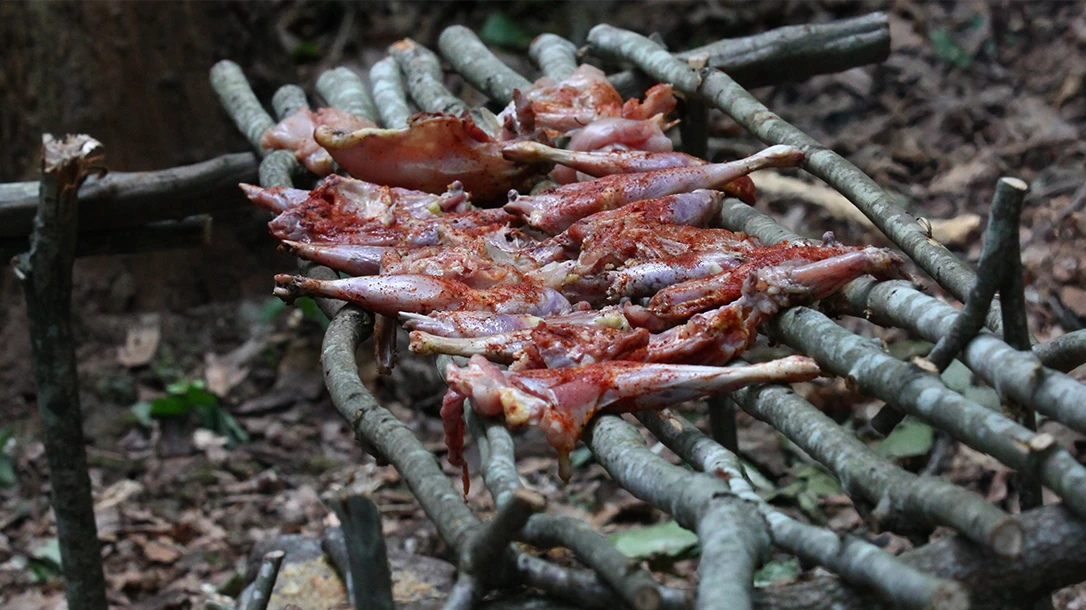
Sticks and Stones Cooking
Get creative with what’s on hand and some trusty common tools like knives and a metal grill. Fashion skewers for barbecuing your choice of meat and wild edibles. Once you’ve got your meat prepped, place it on the grill. Then, grab your handcrafted tongs and flip that deliciousness like a pro. Remember, nothing sizzles quite like bacon on a hot rock!
Oyster and Chicken of the Woods mushrooms grace our world year-round. If identified correctly, they can become a dependable staple. Any veggies you can scrounge up also make excellent grilling candidates. However, cooking meat on a flat rock truly elevates the experience. This technique ensures you capture all those luscious fats and oils from the meat, rather than letting them go to waste. It’s the perfect cooking method when supplies run low. Use those flavorful oils to sauté your veggies or mushrooms right on top!
When searing meat or fish, use an open flame or hot coals over the grill to achieve the perfect char. Once nicely browned, you can finish cooking them on other surfaces or in containers. When meat and fish are plentiful, choose any surface that retains nutrients, fats, and oils. A metal pot is a top performer, but a level flat rock runs a close second. Just be sure it doesn’t spill any of those precious juices off the side!
Conclussion
Try these methods out before you’re in a pinch. They’re perfect for those camping trips or unexpected gatherings. Embrace creativity without going overboard. Stay practical, stay prepared, and remember to enjoy the chaos. Keep it simple; this isn’t a gourmet restaurant, it’s stealth cooking at its finest!
Advertisement — Continue Reading Below
